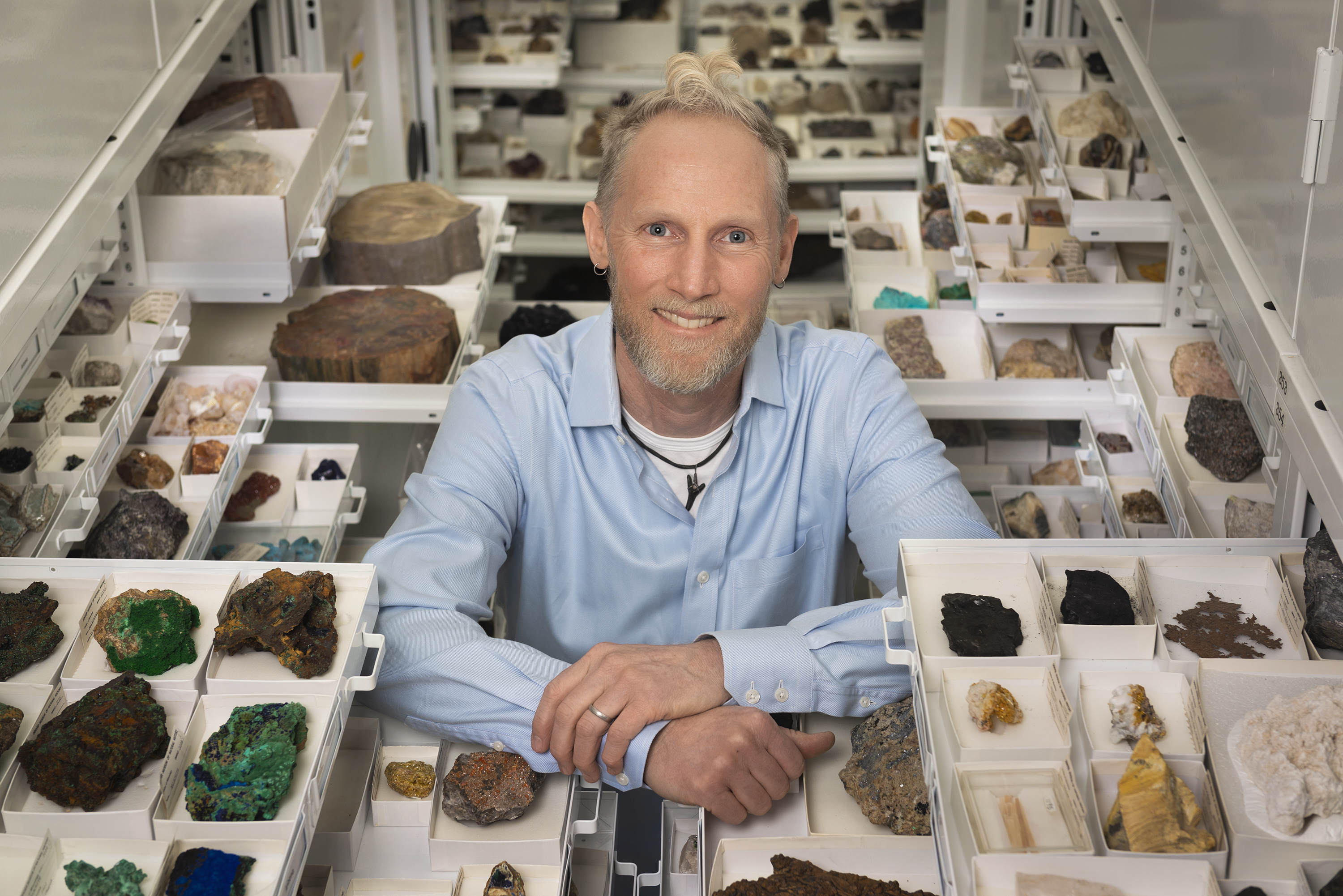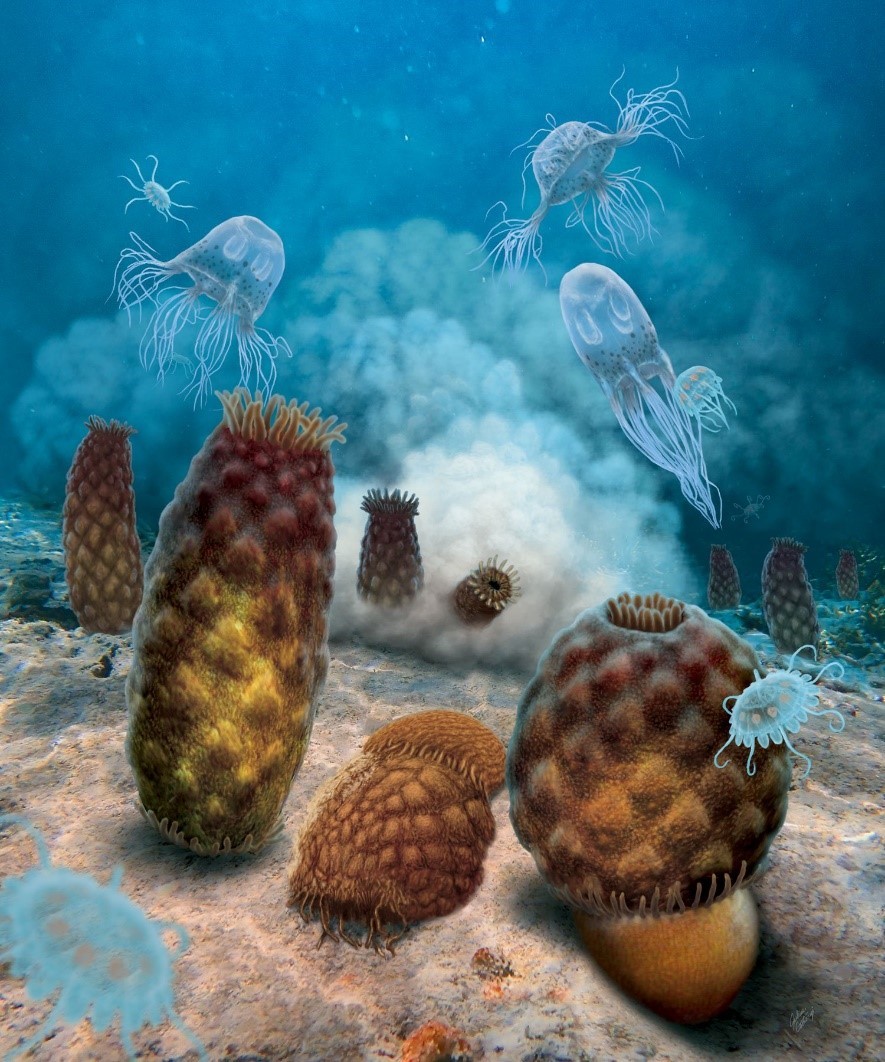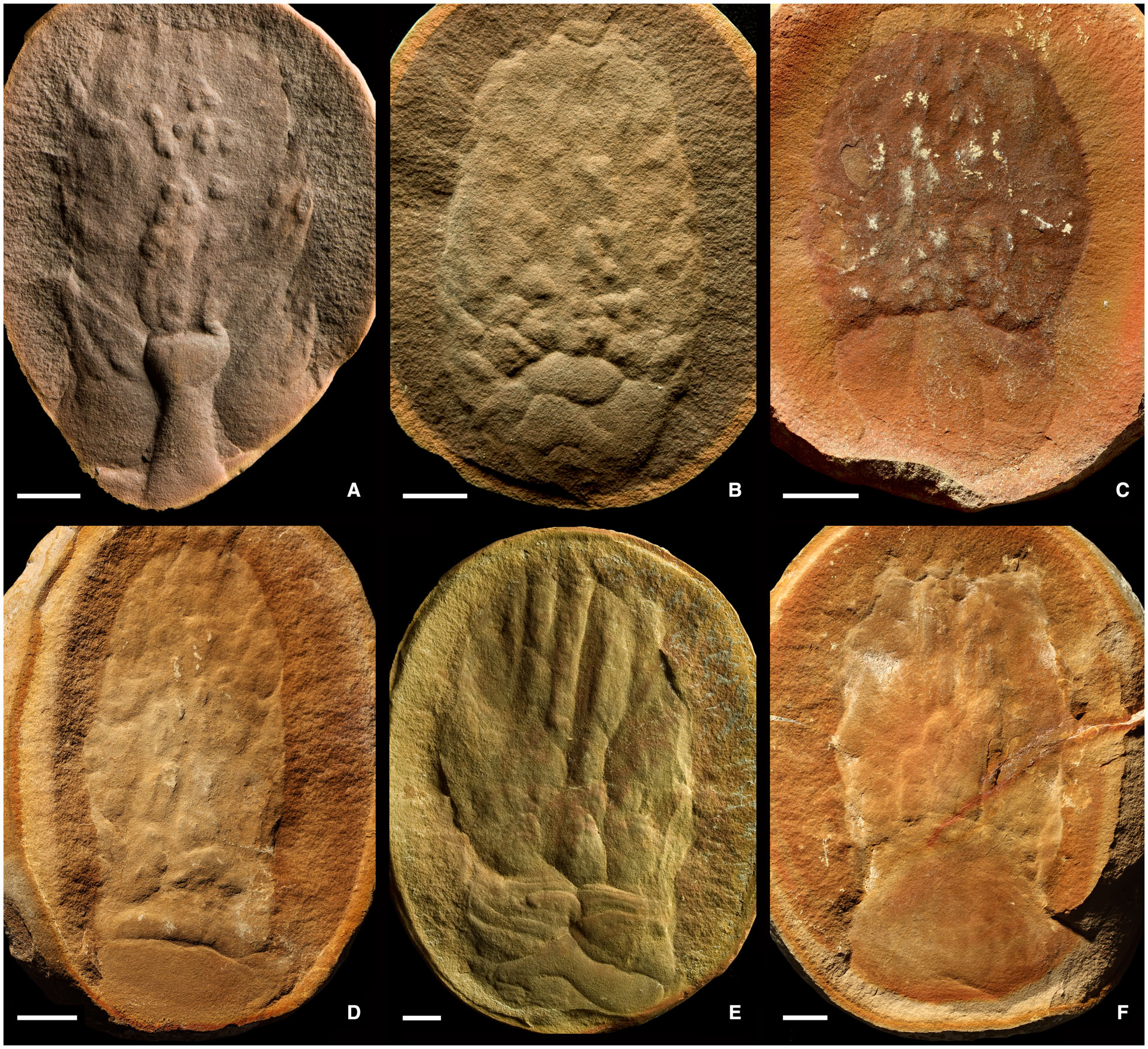
Our very own Dr. James Hagadorn, curator of geology at the Denver Museum of Nature & Science, played a crucial role in making a discovery that was recently covered in the New York Times. The story, entitled “A Fossil Mystery, Solved by a Spin,” recounts how scientists were able to decipher a mystery that had been hiding in plain sight for almost 50 years simply by spinning fossils upside down.

A doomed cluster of the sea anemone Essexella is inundated by an underwater sediment avalanche, which kills and buries them. (Photo/ Julius Csotonyi)
The Mazon Creek is a site with exceptional fossil preservation. This deposit formed as an ancient river spewed sediment into a shallow sea where soft-bodied animals like anemones were living. These underwater avalanches buried the animals quickly, entombing them to become fossils. By far, the most common fossil at Mazon Creek is "the blob." In 1979, researchers made the first detailed study of the blobs and decided that they were jellyfish and named them Essexella asherae.
Read more: Denver Museum of Nature & Science Expert Uncovers Rare Fossil Preservation of Sea Anemones

Examples of Essexella fossils collected from the Mazon Creek site. (Photo/ Denver Museum of Nature & Science)
In late 2016, Dr. Roy Plotnick from the Field Museum in Chicago and the Denver Museum of Nature & Science’s Dr. Hagadorn undertook an investigation of these fossils, along with Graham Young of the Manitoba Museum. Their pivotal moment came when Dr. Plotnick rotated one of the fossils upside down, revealing that its features resembled the bottom of a sea anemone rather than a jellyfish.
“It looked like the bottom of an anemone,” Dr. Plotnick told the New York Times. “That was one of only a few times I've actually had the classic eureka moment.”
Further research confirmed that what had been thought to be a jellyfish's bell was actually the burrowing base of an anemone. The textured, barrel-shaped region was not a curtain around jellyfish tentacles but the body of an anemone. In 2023, Dr. Hagadorn, Dr. Plotnick and Dr. Young published their findings in the journal Papers in Palaeontology, redefining Essexella as an ancient anemone.
“Rocks like those that house these anemones are all over Colorado,” said Dr. Hagadorn. “Maybe someday we’ll find another fossil bonanza like this one, but right in our own backyard.”
Original article by Jack Tamisiea, published in the New York Times on July 14, 2024. Full credit to the New York Times for the detailed and insightful reporting.
